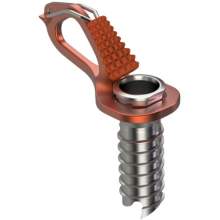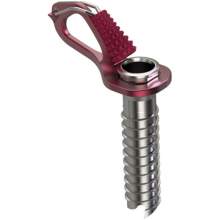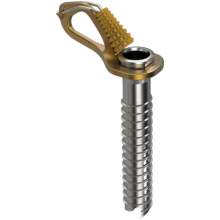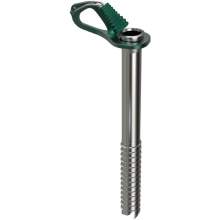A pictoral representation of the UIAA-151 and EN-568 standards for ice screws.
Aero 19cm
Description
The Aero is innovative thanks to its 3-tooth tip design which gives the best quick and easy screwing. Its thin wall design reduces the weight considerably, the steel tip and tube maintains high durability of the threads. Its largest diameter body allows to use securely existing holes when there is no other option. Colors-coding easily indicates the length of the screw. Its features and design make it the ideal ice screw for the most technical routes where performance, durability and lightness are key.
Sold with Teeth protective cap. Replacement caps available to buy
Foldable stainless steel wire crank
Highly textured crank knob for secure handling
The Aero is innovative thanks to its 3-tooth tip design which gives the best quick and easy screwing. Its thin wall design reduces the weight considerably, the steel tip and tube maintains high durability of the threads. Its largest diameter body allows to use securely existing holes when there is no other option. Colors-coding easily indicates the length of the screw. Its features and design make it the ideal ice screw for the most technical routes where performance, durability and...
read moreRetail price
When you click a link below and then checkout online, no matter what you buy (climbing gear or not), we get a small commission that helps us keep this site up-to-date. Thanks!
Weight (grams / ounces)  | 111 g / 3.91 oz |
Length (cm)  |
19 cm |
Feature(s)  |
Folding Handle Color Coding |
Strength (kn)  |
|
Materials  | Hanger: Aluminum Tube: Steel Teeth: Chromoly steel |
Certification  |
CE, EN, UIAA |
No reviews yet.
So, how come they are so light? Simply put, the Aero has thinner tube wall thickness. It's the thin wall design that allows for a lot of the weight saving. When you look down the barrel of a Blue Ice Aero and for example a Petzl Laser Speed and the difference in wall thickness is noticeable. On top of this they have a wider diameter than other screws on the market. At first this isn't really that noticeable but I certainly found I get used to placing the Blue Ice screws and then pulling another brand off the harness feels quite strange.
If you know of a good product video that should be here, let us know, and we'll put it up.
If you're looking for gear videos in general, check out our Vimeo and YouTube channels to see the newest gear.











